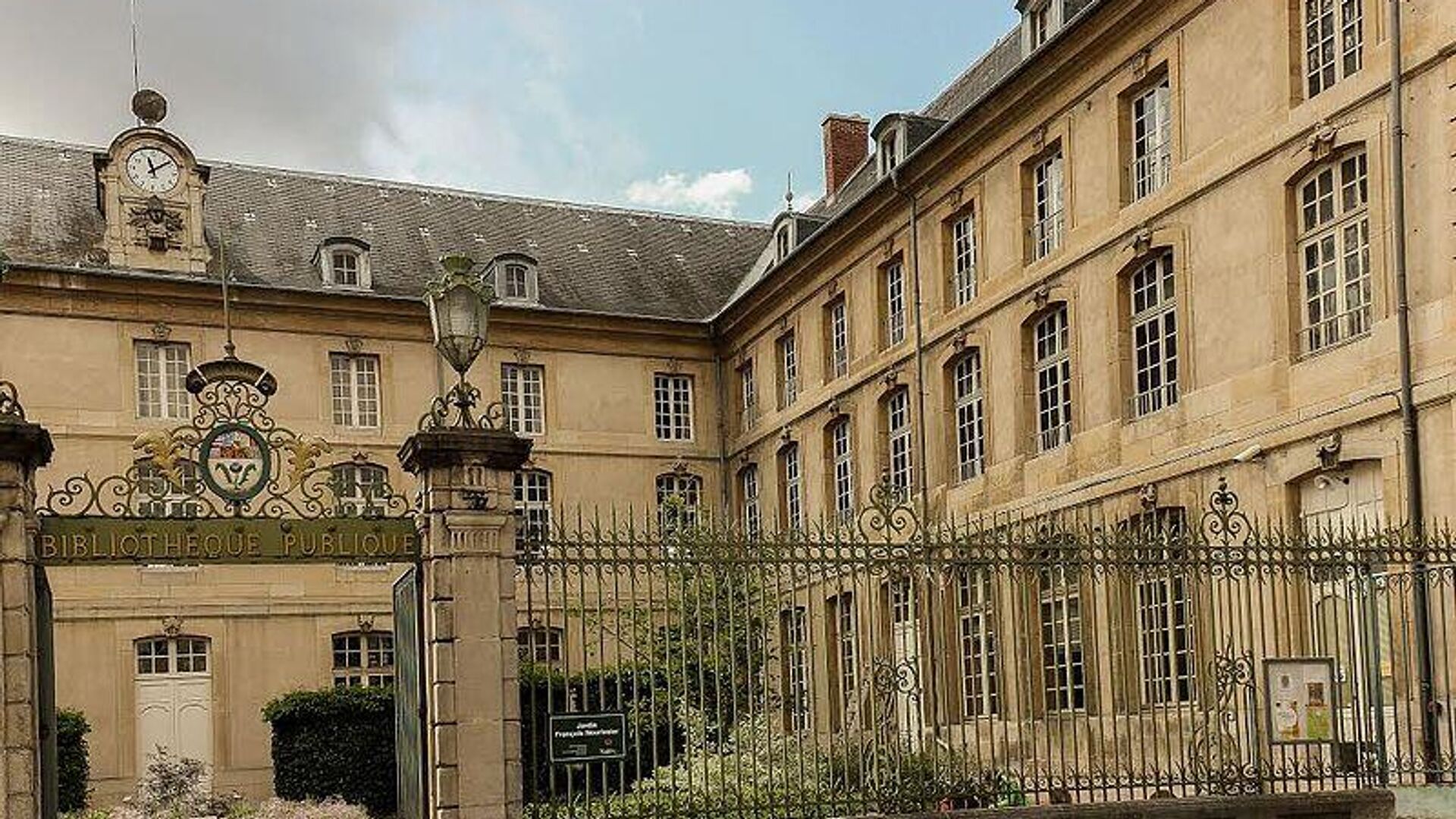https://sputnikglobe.com/20221125/cracking-charles-vs-code-deciphered-letter-reveals-emperors-fear-1104677515.html
Cracking Charles V's Code: Deciphered Letter Reveals Emperor's Fear
Cracking Charles V's Code: Deciphered Letter Reveals Emperor's Fear
Sputnik International
One of the joys of history is however well a scholar thinks he or she knows a topic, there are always discoveries to be made. For example, French academics... 25.11.2022, Sputnik International
2022-11-25T10:58+0000
2022-11-25T10:58+0000
2023-03-06T18:51+0000
science & tech
plot
france
letter
cipher
spain
https://cdn1.img.sputnikglobe.com/img/07e6/0b/19/1104677367_0:29:800:479_1920x0_80_0_0_5fa27ffc9bb727bb95d50cac70f38be8.jpg
A team of academics from the Lorraine Laboratory of Research in Computer Science and Its Applications (LORIA) in eastern France have cracked a code that Holy Roman Emperor and King of Spain, Charles V, used to encrypt a letter back in 1547.Charles V was the Emperor who ruled the first transatlantic empire (a large part of western Europe and a slice of the Americas) and his reign lasted for more than 40 years. The first half of the 16th century was a period of the so-called 'Italian Wars'. In 1547, France's ruler, Francis I - with whom Charles V had signed the peace treaty of Crépy in 1544 - died. Other conflicts were soon to rear their head.The letter that Charles V wrote to his ambassador Jean de Saint-Mauris was heavily encrypted: whole words were replaced with a single symbol, symbols that meant nothing were used, and some vowels coming after consonants were replaced with marks, thus leaving the letter incomprehensible, except for the signature of Charles V.Cecile Pierrot, a cryptographer from LORIA, first learnt of the letter's existence in the Stanislas library in Nancy in 2019, and after much searching was able to see it with her own eyes in 2021. It took the team six months of painstaking work backed by computers, but eventually Pierrot found "distinct families" of some 120 symbols. Another letter from Jean de Saint-Mauris, where the receiver had doodled a form of transcription code in the margin, also helped. After that, the team understood a phrase in the letter, and then the code was cracked with the help of historian Camille Desenclos.The letter revealed Charles V's fear of a rumored assassination plot against him that was allegedly being planned at the time in France.The researchers now hope to identify other letters of the emperor "to have a snapshot of Charles V's strategy in Europe" and "it is likely that we will make many more discoveries in the years to come," the historian said.
france
spain
Sputnik International
feedback@sputniknews.com
+74956456601
MIA „Rossiya Segodnya“
2022
News
en_EN
Sputnik International
feedback@sputniknews.com
+74956456601
MIA „Rossiya Segodnya“
Sputnik International
feedback@sputniknews.com
+74956456601
MIA „Rossiya Segodnya“
charles v, francis i, spain, france, letter, plot, cipher
charles v, francis i, spain, france, letter, plot, cipher
Cracking Charles V's Code: Deciphered Letter Reveals Emperor's Fear
10:58 GMT 25.11.2022 (Updated: 18:51 GMT 06.03.2023) One of the joys of history is however well a scholar thinks he or she knows a topic, there are always discoveries to be made. For example, French academics have been recently been focusing on something that has been encrypted for nearly 500 years.
A team of academics from the Lorraine Laboratory of Research in Computer Science and Its Applications (LORIA) in eastern France have cracked a code that Holy Roman Emperor and King of Spain, Charles V, used to encrypt a letter back in 1547.
Charles V was the Emperor who ruled the first transatlantic empire (a large part of western Europe and a slice of the Americas) and his reign lasted for more than 40 years.
The first half of the 16th century was a period of the so-called 'Italian Wars'. In 1547, France's ruler, Francis I - with whom Charles V had signed the peace treaty of Crépy in 1544 - died. Other conflicts were soon to rear their head.
The letter that Charles V wrote to his ambassador Jean de Saint-Mauris was heavily encrypted: whole words were replaced with a single symbol, symbols that meant nothing were used, and some vowels coming after consonants were replaced with marks, thus leaving the letter incomprehensible, except for the signature of Charles V.
Cecile Pierrot, a cryptographer from LORIA, first learnt of the letter's existence in the Stanislas library in Nancy in 2019, and after much searching was able to see it with her own eyes in 2021.
It took the team six months of painstaking work backed by computers, but eventually Pierrot found "distinct families" of some 120 symbols. Another letter from Jean de Saint-Mauris, where the receiver had doodled a form of transcription code in the margin, also helped. After that, the team understood a phrase in the letter, and then the code was cracked with the help of historian Camille Desenclos.
"There was a real breakthrough that happened one day, where all of a sudden we had the right hypothesis," said Desenclos. "[It was] rare for a historian to manage to read a letter that no one had managed to read for five centuries."
The letter revealed Charles V's fear of a rumored assassination plot against him that was allegedly being planned at the time in France.
The researchers now hope to identify other letters of the emperor "to have a snapshot of Charles V's strategy in Europe" and "it is likely that we will make many more discoveries in the years to come," the historian said.

